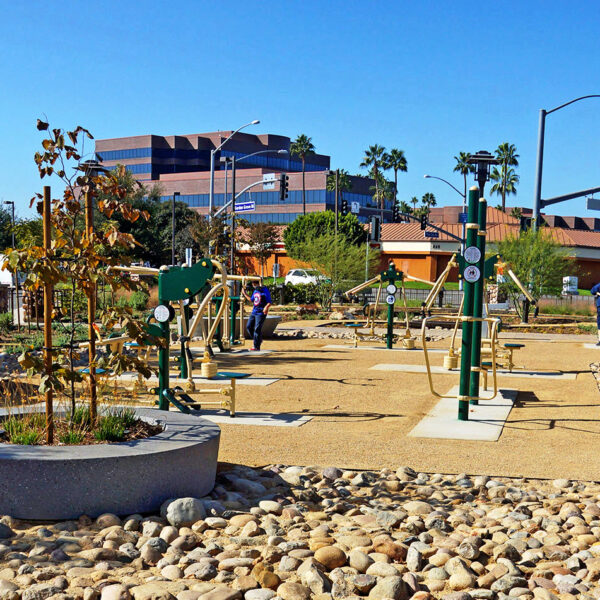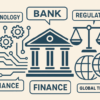Core Memory Meaning
TikTok users have made core memory content viral with more than 880 million views. The 2015 Pixar film “Inside Out” brought this concept to mainstream audiences by showing five core emotions linked to key memories. The science behind these most important memories goes far beyond the movie’s portrayal.
Core memories are emotional memories that come up during strong emotional states. They often link to life’s big moments like graduations, weddings, or personal losses. The movie shows a simplification of how memories work. Research tells us that people don’t have a fixed number of core memories. Memory formation happens in three stages – encoding, storage, and retrieval. Emotions play a vital role in how well we remember things.
This piece tells you about core memories, what they mean psychologically, and how they affect personal growth. You’ll learn how these powerful memories shape our decisions and why some experiences stick with us more than others.

What Is Core Memory: Understanding the Concept
The term “core memory” didn’t come from scientific research but became culturally relevant through entertainment. Let’s learn about what makes a core memory by looking at its origins, psychology, and unique features.
The origin of core memory in popular culture
The 2015 Pixar film “Inside Out” introduced “core memory” to the world. This animated feature shows its main character Riley with five glowing orbs that shape different parts of her personality. Joy, one of Riley’s emotions, describes these golden orbs as memories that “power a different aspect of Riley’s personality”.
This creative concept struck a chord with viewers and became a social media sensation. TikTok’s #corememory hashtag has now reached over 880 million views worldwide. Users share their childhood nostalgia – from Saturday morning cartoons to first crushes and puddle-jumping adventures.
Major brands now use this terminology in their marketing to connect with younger audiences through emotional storytelling. All the same, this commercial use raises questions about whether we can deliberately create or choose such fundamental memories.
Core memory meaning in psychology
Scientists don’t officially recognize “core memories” as a distinct category. They study autobiographical memory instead – a system that blends personal experiences with factual knowledge about one’s life.
Conway and Pleydell-Pearce’s “self-memory system” (SMS) organizes these memories into three levels:
- Lifetime periods – General knowledge about distinct themed times in life (school years, career periods)
- General events – Specific representations of repeated events or related sequences
- Event-specific knowledge – Detailed information about individual events, often in visual form
Life gives us countless meaningful memories, not just five as shown in “Inside Out.” These memories help build our identity, strengthen social bonds, and shape our future actions.
How core memories differ from regular memories
What people call “core memories” show several unique traits compared to everyday recollections:
Strong emotions mark the biggest difference. Our brains store emotionally charged memories more effectively. The amygdala and hippocampus work together during these intense experiences to create stronger neural pathways.
These memories stay crystal clear and persistent. While our brain reconstructs all memories during recall, emotional ones keep more sensory details and resist fading. They often surface on their own rather than through conscious effort.
These experiences shape who we become. The most important memories often mark beginnings, turning points, or moments that confirm our beliefs.
It’s worth mentioning that meaningful memories aren’t just childhood experiences. Most key autobiographical memories cluster around early adulthood – what psychologists call the “reminiscence bump”. New core memories can form at any age as life-changing events continue to mold our identity.
Business leaders and entrepreneurs can benefit from learning about core memories. Understanding how these formative experiences guide decision-making helps develop better self-awareness and more thoughtful approaches to leadership and strategy.

The Science Behind Core Memory Formation
Neuroscience research has revealed fascinating details about how our brains create and keep our most important memories. This gives us a better grasp of what core memories mean from a biological point of view.
How your brain creates lasting memories
Different brain regions work together in a complex way to form lasting memories, with the hippocampus leading the charge. Scientists found this vital connection by studying patient H.M. He lost his hippocampus through surgery and couldn’t form new long-term memories, though his cognitive abilities and short-term memory stayed normal. This groundbreaking case showed that long-term memory formation needs a working hippocampus.
Our brains activate specific genes called Fos and Scg2 in small groups of hippocampal neurons when we face new experiences. These genes help neurons adjust inputs from inhibitory interneurons and create lasting networks that work together. The neurons fire more in sync when we need to remember something.
Our brains combine important memories during sleep through “sharp wave-ripples” – quick bursts where about 15% of hippocampal neurons fire together. Memories that trigger 5-20 sharp wave-ripples get replayed more during sleep and turn into permanent memories. Those with few or no ripples don’t last.
The role of emotion in memory encoding
Emotions shape our memories through the amygdala’s teamwork with memory centers. The amygdala and hippocampus light up almost at once during emotional events. This creates stronger neural connections than neutral experiences.
Several pathways drive this emotional boost. The basolateral amygdala releases stress hormones like epinephrine and glucocorticoids during emotional experiences, which helps lock memories in place. On top of that, emotional triggers create a “pop-out” effect that grabs attention and gets special processing.
Stress affects memory in an inverted U-shape way. A moderate amount of stress makes memories stronger, but too much stress hurts memory formation. Glucocorticoid receptors balance this by turning on specific cell signaling pathways needed to lock in memories.
Why some experiences become core memories
The brain uses special methods to pick which memories stick around. Events that provoke strong emotional responses have a better chance of being remembered. The amygdala helps this selection by improving how we process emotionally important information.
Curiosity helps form memories too. Being interested in new or surprising things makes us explore more and helps our brain learn and remember better. Rewards typically trigger sharp wave-ripples when someone stops to enjoy them. This prepares the brain to switch from exploring to storing memories.
Core memories last because we activate them often. Memories that we recall frequently and think about meaningfully tend to stick around. Each time we retrieve a memory, it strengthens the neural pathways. This makes memories more durable and easier to access as time goes by.
These insights are a great way to get valuable knowledge for entrepreneurs and business leaders who want to create memorable brand experiences or improve learning in their organizations.
Core Memory Unlocked: How These Memories Shape Business Decisions
Entrepreneurs build their decision-making skills from years of experience in the business world. These powerful recollections—what many now call “core memories”—shape their leadership styles, risk tolerance, and strategic vision.
The entrepreneurial mindset and core memories
The entrepreneurial mindset flows between two main orientations: elaboration (finding potential solutions) and implementation (executing these solutions). Core memories guide entrepreneurs as they move between these orientations to spot opportunities and act on them.
Research shows these mental changes help entrepreneurs learn and develop business opportunities. Core memories give entrepreneurs a framework to interpret challenges they face. Yes, it is true that negative experiences can discourage them, but these experiences often help them realize their full potential through higher-order learning that builds resilience and problem-solving skills.
Core memories work as mental tools that let entrepreneurs adapt their thinking to tackle specific challenges. When one approach fails, entrepreneurs who have rich core memories can change direction more smoothly. They pick different strategies based on what they learned from past experiences.
How past experiences influence risk assessment
Past experiences shape how entrepreneurs see and review risks. Studies prove that previous experience predicts higher risk awareness, even after accounting for gender, income, education, and values.
The transfer effect stands out—powerful experiences can shift feelings of caution or confidence beyond their original context to other types of risks. To name just one example, experiencing violence raises perceived risk not just for violence-related situations but also for various lifestyle and known business risks.
This pattern lines up with what researchers call “diagnostic expectations.” Business leaders rely heavily on readily available memories when they form beliefs about future outcomes, which often leads to biased judgments. The Survey of Beliefs experiment showed that certain lived experiences can surface through contextual cues and affect probability estimation and risk assessment.
Using core memories to guide strategic planning
Core memories offer vital context to anticipate the future and develop reliable business strategies. Strategic design sets an organization’s future direction by seeing potential business environments differently and reimagining the organization’s role in these different futures.
Effective leaders utilize their core memories to:
- Create “memories of the future” through scenario planning, which helps detect and interpret changes before they disrupt
- Develop strategic responses to alternative futures, emotionally preparing for change
- Spot “embryonic issues and opportunities” before they emerge fully, avoiding paradigm blindness
We used this approach to help business leaders develop what experts call “corporate memories of the future”—mental models that filter out information overload. By picturing paths to desired outcomes, entrepreneurs can direct themselves through uncertainty and make non-routine decisions better.
Understanding core memories gives entrepreneurs better self-awareness about their natural tendencies and potential biases in decision-making. Leaders who explore these foundational experiences and their effect on business judgment can make more intentional strategic choices that utilize their unique insights while addressing their blind spots.
Childhood Core Memory Meaning for Professional Development
Early memories from childhood shape how leaders approach business decisions in their adult life. These memories create patterns that surface when professionals face pressure at work. Natural responses emerge from these early experiences and affect how people handle workplace challenges.
Early experiences that shape leadership styles
The family unit provides our first glimpse into organizational structures. As one expert notes, “Families are, after all, our first ‘enterprise,’ and our parents and siblings are our first ‘management team'”. Professional behavior patterns often mirror these original experiences with authority and teamwork.
Research shows three childhood factors shape leadership tendencies: parental positivity, emotional sensitivity, and disciplinary approach. Children with authoritarian parents tend to develop pessimistic outlooks. Those with permissive parents become optimists – a trait that affects their business risk assessment and innovation.
A child’s attachment security plays a vital role in leadership development. Studies reveal that secure childhood attachment associates with deeper empathy and emotional investment in followers. The research also shows that attachment anxiety affects transformational and laissez-faire leadership styles.
Transforming childhood lessons into business principles
Leaders can utilize childhood experiences to learn about business. DECA (Distributive Education Clubs of America) helps young people find their business aptitudes early. One participant won state competitions after conquering the “scary category” of professional sales.
Simple childhood activities build business foundations. The “Bank of Dad” concept teaches children vital financial lessons about budgeting, quality assessment, and delayed gratification. Lemonade stands and car washes promote an entrepreneurial mindset that connects effort with earning money.
Childhood trauma sometimes creates unique professional strengths. Career construction theory suggests people choose professions that solve their personal trauma by making it meaningful. This explains why many helping professionals turn their early helplessness into careers that focus on helping others.
Leaders gain valuable self-awareness by understanding their early memories. Only when we are willing to see how early experiences shaped our natural leadership tendencies can we make conscious choices rather than unconsciously repeat childhood patterns in our organizations.
Leveraging Core Memories for Business Success
Business leaders who succeed know their core memories. They use these powerful recollections as assets to grow their organizations and develop themselves.
Identifying your most valuable core memories
You need to think over what makes up your most valuable core memories. Studies show emotionally charged memories stick in long-term memory. These memories affect wellbeing for up to a year. Here’s how to spot these influential memories:
- Get into experiences that sparked strong emotional responses
- Think about moments that shaped how you handle risk and innovation
- Look back at times you showed resilience or learned vital lessons
Research shows core memories can shape career goals and help set meaningful professional targets. These memories also reveal natural leadership styles, communication priorities, and how you make decisions.
Applying core memory insights to overcome challenges
Core memories help you navigate business obstacles. Humans need quick recall and deep analysis to work. Similarly, businesses need instant data access and strategic analysis to grow. Leaders who use core memory insights make better choices in tough situations.
Each negative core memory connects to its own memory network. This network activates when certain situations trigger it. Leaders can turn negative patterns into balanced, helpful views by understanding these networks. This change has worked well to help people recover from burnout. Entrepreneurs who face high stress find this especially valuable.
Creating positive core memories for your team
Leaders who encourage positive environments create memories their employees treasure. Research proves shared experiences build stronger connections and trust. Team members cooperate better because of these bonds.
Regular office gatherings let employees connect and build happy memories. Activities outside work help break down walls and build unity that proves valuable at work. These social interactions are more than just fun—they build stronger teams.
People who enjoy their coworkers’ company look forward to coming to work. This positive attitude boosts productivity, keeps people around longer, and builds a strong company culture.
Core memories shape how business leaders make decisions way beyond their simple recollections. Successful entrepreneurs don’t see these memories as static snapshots. They use them as dynamic tools to plan strategy and grow professionally.
Science shows emotional experiences create lasting neural pathways. Business leaders can use these pathways to improve their leadership capabilities. These powerful memories help them assess risks, build teams, and develop strategic vision.
Childhood experiences create the foundation of leadership styles. Business success relies on understanding and adapting these inherent patterns. Leaders who understand their core memories’ influence ended up making better decisions. They build stronger teams and create positive workplaces that encourage long-term success.
Core memories teach us something important – each key experience shapes our future choices and responses. Leaders who become skilled at using their emotional memories gain a powerful edge. This helps them tackle challenges and grab opportunities in today’s competitive market.
Some FAQs about the core memory meaning:
What is the core memory saying?
The phrase “core memory” refers to a foundational memory that shapes one’s identity, often tied to the core memory meaning of pivotal life experiences. When people say “core memory unlocked,” they’re referencing the core memory unlocked meaning of suddenly recalling a significant past moment. These expressions capture the childhood core memory meaning of formative events that influence who we become.
What is a synonym for core memory?
Synonyms include “foundational memory” or “semantic memory,” reflecting the a core memory meaning of identity-shaping recollections. The childhood core memory meaning is similar to what psychologists call “self-defining memories.” These terms all describe the new core memory unlocked meaning of experiences that become personal landmarks in one’s life story.
Can adults have core memories?
Absolutely – adults frequently form new core memories, hence the phrase new core memory unlocked meaning for significant adult experiences. While many associate the childhood core memory meaning with early life, the core memory unlocked concept applies throughout one’s lifespan. Major adult milestones can carry the same a core memory meaning as childhood events.
What is the use of core memory?
Core memories serve psychological functions tied to the core memory meaning of identity formation and self-concept. The childhood core memory meaning particularly shows how early experiences shape personality development. These memories with a core memory meaning help us understand our personal narratives and emotional responses.
What is a core memory in a person?
A core memory represents an emotionally charged experience with the core memory unlocked meaning of being personally transformative. These memories with childhood core memory meaning often involve sensory richness and strong emotions. They embody the a core memory meaning of events that feel pivotal to one’s life story and sense of self.
How to use core memory in a sentence?
Example: “Holding my newborn for the first time created a core memory” demonstrates the a core memory meaning. Or: “New core memory unlocked when I graduated college” shows the core memory unlocked meaning. These illustrate the childhood core memory meaning in different life stages.
What is a core member?
While distinct from memory concepts, a core member refers to an essential participant in a group or organization. This differs from the core memory meaning which relates to psychologically significant recollections. Both terms share the “core” concept of something fundamental, though applied differently.
What is a synonym for the core of something?
Synonyms include “essence,” “heart,” or “foundation,” which relate to the a core memory meaning of fundamental elements. The childhood core memory meaning similarly refers to psychologically foundational experiences. These terms all convey centrality and importance in their respective contexts.
What is another word for personal memory?
Alternatives include “autobiographical memory” or “episodic memory,” similar to the core memory unlocked meaning. The childhood core memory meaning represents a specific type of impactful personal memory. These terms all describe individually significant recollections with emotional resonance.
FOLLOW US ON FACEBOOK
RECENT POSTS
TAGS
About The Memory Hole
You've reached TheMemoryHole.org! A diverse lifestyle blog with content on a variety of different topics to help you define and live the life you want to live! Thanks for stopping by!
Copyright © The Memory Hole. All rights reserved.








